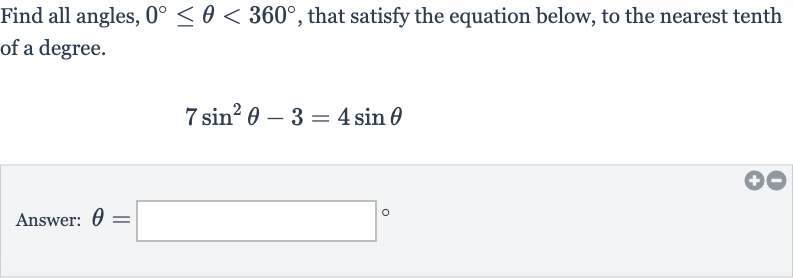Full solution
Q. Find all angles, , that satisfy the equation below, to the nearest tenth of a degree.Answer:
- Rewrite Equation: Rewrite the given equation in a standard quadratic form.We have the equation . To solve for , we need to rearrange the equation into a standard quadratic form, , where is .
- Factor Quadratic: Factor the quadratic equation.We need to factor the quadratic equation . This can be done by looking for two numbers that multiply to give () and add to give . These numbers are and .
- Solve Factors: Solve each factor for . We now have two factors that can be set to zero to solve for : or Solving each equation for gives us: or
- Find : Find the angles that correspond to .Since does not correspond to a special angle, we will use a calculator to find the value of . We need to find the reference angle first and then determine the angles in the third and fourth quadrants where sine is negative.Reference angle = degreesAngles in the third and fourth quadrants: degrees and degrees
- Find : Find the angles that correspond to . The angle where is a special angle, and we know that sine reaches its maximum value of at degrees.
- Compile Solutions: Compile all solutions.The angles that satisfy the original equation are approximately degrees, degrees, and degrees.

